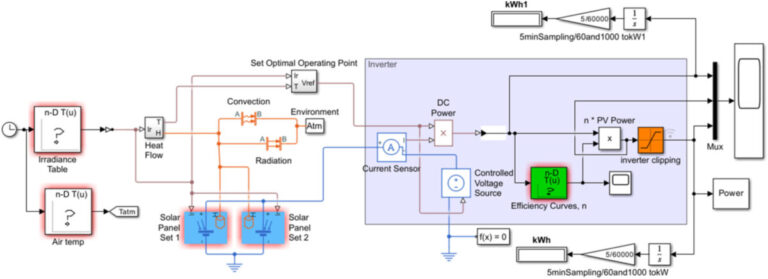Researchers in Malaysia have proposed a new approach to identify the optimal power size ratio to balance PV energy capture with inverter cost. The calibrated model is said to accurately reflect the relationship between inverter efficiency and real-world system behavior.
Researchers from Universiti Teknikal Malaysia Melaka have outlined a techno-economic optimization approach to define the appropriate power sizing ratio (PSR) for inverters used in grid-connected PV systems.
The PSR is the ratio between the rated power of the inverter and the total rated power of the connected PV modules and is crucial for maximizing energy yield and income. “An inverter that is too small limits the system’s ability to convert all generated direct current into alternating current, leading to potential energy losses,” the scientists explained. “Conversely, an oversized inverter has higher initial costs without a commensurate increase in energy production.”
The proposed methodology uses a pattern search algorithm (PSA), an optimization technique often used for problems involving complex relationships and potentially noisy data, to ensure an accurate representation of the inverter’s behavior in the real world.
The model takes into account radiation, thermal representations of convection and real-world weather data. Data from the inverters’ datasheets is also taken into account to evaluate the efficiency curve of the devices. Key points are then extracted from this curve to identify the efficiency values between the chosen data points.
“The model undergoes a calibration phase in which the efficiency curve points are iteratively adjusted by the PSA until the estimated/modeled values closely match the actual measurements obtained from the real system over a predefined period,” the group explains. “This calibration step ensures that the model accurately reflects the real-world performance of the system.”
According to the scientists, the model can estimate the annual energy output of a solar panel through different DC/AC power ratios for each iteration step, helping PV system owners find the optimized ratio that maximizes energy production.
They also cautioned that the appropriate selection of the optimal PSR must be supplemented with economic considerations regarding inverter costs, operation and maintenance, inverter complexity and monitoring systems. “It is important to note that the cost function does not directly represent monetary value, but rather a relative measure of economic performance,” they emphasized. “The actual economic feasibility would depend on specific system costs and electricity prices.”
The new methodology was presented in the study “Techno-economic optimization of the power ratio of photovoltaic (PV) inverters for grid-connected PV systems,” published in Results in technology.
“Future research directions include investigating the integration of additional factors into the model,” the research team concluded. “These factors could include advanced weather forecasting capabilities, dynamic pricing controls and potential application to different types of PV systems or even broader renewable energy systems.”
This content is copyrighted and may not be reused. If you would like to collaborate with us and reuse some of our content, please contact: editors@pv-magazine.com.


